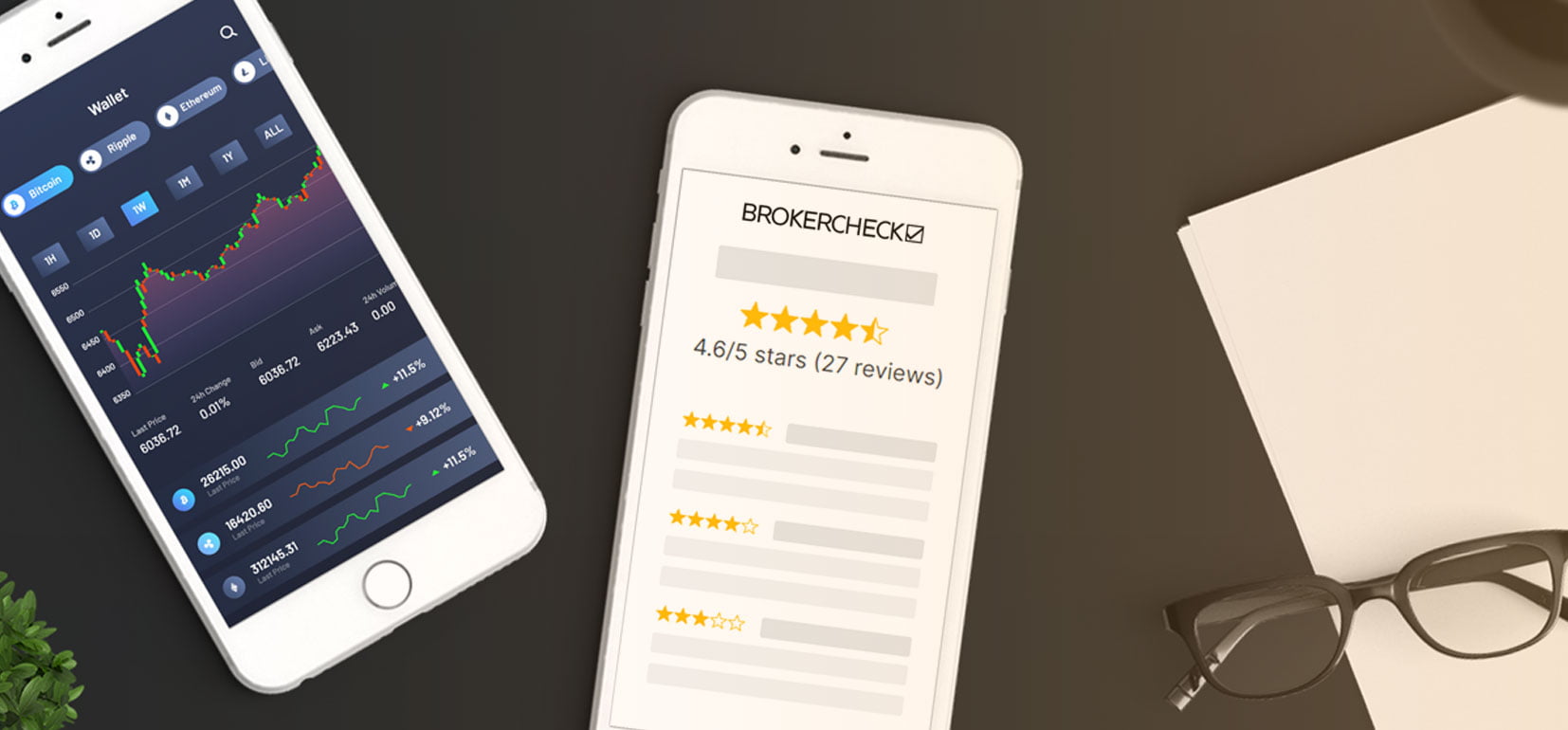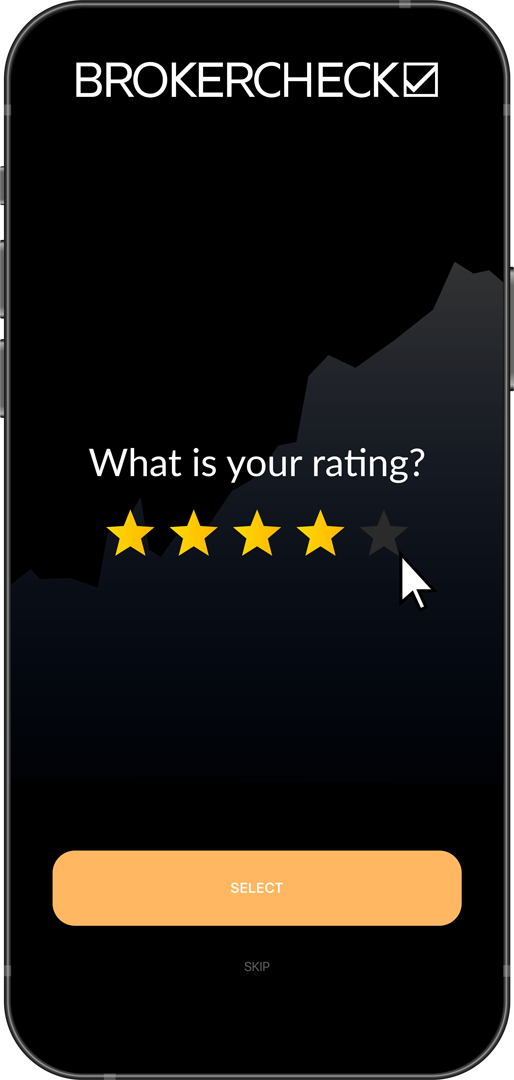1. Overview Of Algorithmic Trading
1.1. What is Algorithmic Trading (Algo Trading)?
Algorithmic trading, often referred to as algo trading, involves using computer algorithms to automate trading decisions and execute trades. These algorithms follow a predefined set of rules or instructions based on various factors, including price, timing, and volume. Essentially, algo trading leverages mathematical models and complex formulas to make high-speed decisions and execute orders faster than a human trader could.
In simple terms, algorithmic trading uses sophisticated software to identify and exploit market opportunities with minimal human intervention. These algorithms can analyze vast amounts of market data, detect patterns, and execute trades with precision and speed. This automation helps traders take advantage of even the slightest price movements, which can be crucial in highly volatile markets.

1.2. Benefits of Algo Trading
- Speed: Algorithms can process market data and execute trades in milliseconds, far quicker than any human trader.
- Efficiency: Automation ensures that trades are executed at the best possible prices, reducing slippage and trading costs.
- Reduced Emotions: By removing human emotions from the trading process, algorithms help maintain a consistent and disciplined trading approach.
- Scalability: Algorithms can manage multiple trading strategies and monitor various markets simultaneously, something that would be challenging for a human trader.
- Backtesting: Algorithms can be backtested using historical data to evaluate their performance and optimize strategies before deploying them in live markets.
1.3. Why Get Started with Algorithmic Trading?
For beginners, algorithmic trading offers several compelling advantages:
- Removes Emotion from Decision-Making: Emotional decisions can lead to significant trading losses. Algorithms follow a set of rules and are not swayed by emotions, ensuring a disciplined approach.
- Accessibility: With the advent of user-friendly platforms and educational resources, even novice traders can start developing and deploying their own algorithms.
- Potential for Higher Returns: By leveraging the speed and precision of algorithms, traders can potentially achieve higher returns compared to manual trading.
1.4. Asset Classes for Algo Trading
Algorithmic trading can be applied across various asset classes, each with its unique characteristics and opportunities:
- Stocks: Algo trading is widely used in stock markets to exploit price discrepancies and arbitrage opportunities. Strategies like statistical arbitrage and market making are common in stock trading.
- Forex (Foreign Exchange): The forex market is highly liquid and operates 24/5, making it an ideal environment for algorithmic trading. Strategies like trend following and mean reversion are often used in forex trading.
- Cryptocurrencies: The volatility and around-the-clock nature of cryptocurrency markets provide numerous opportunities for algo trading. Algorithms can capitalize on price swings and market inefficiencies in the crypto space.
- Futures: Futures markets offer high leverage and diverse trading opportunities. Algo trading strategies in futures often focus on trend following, spread trading, and arbitrage.
Algorithmic trading is not only for seasoned traders or financial institutions. With the right knowledge and tools, beginners can also leverage the power of algorithms to enhance their trading performance and achieve their financial goals. As we delve deeper into this article, we’ll explore the foundational knowledge and tools required to get started with algorithmic trading.
2. Building Your Foundation
2.1. Essential Financial Market Knowledge
For beginners venturing into algorithmic trading, a solid understanding of the financial markets is crucial. This foundation includes knowledge of various order types, trading psychology, and risk management principles.
- Order Types:
- Market Orders: These are orders to buy or sell a security immediately at the current market price. They ensure quick execution but do not guarantee the exact price at which the order will be filled.
- Limit Orders: These orders specify the maximum or minimum price at which you are willing to buy or sell a security. They offer more control over the execution price but may not be filled if the market does not reach the specified price.
- Stop Orders: These are orders that become market orders once a specified price level is reached. They are often used to limit losses (stop-loss orders) or to enter a position at a desired level (stop-buy orders).
- Trading Psychology:
- Emotional Control: Successful traders maintain control over their emotions, avoiding impulsive decisions driven by fear or greed. Algorithms help mitigate these emotional biases by adhering to predefined rules.
- Discipline: Consistency in following trading plans and strategies is key. Algorithms ensure disciplined execution without deviation from the plan.
- Risk Management:
- Position Sizing: Determining the appropriate amount of capital to allocate to each trade helps manage risk and avoid significant losses.
- Diversification: Spreading investments across different asset classes and strategies reduces the impact of poor performance in any single area.
- Stop-Loss Orders: These orders automatically close a position at a predetermined loss level, helping to limit potential losses.

2.2. Different Asset Classes
Understanding the characteristics of various asset classes is essential for developing effective algorithmic trading strategies:
- Stocks: Stock markets are driven by company performance, economic indicators, and market sentiment. They offer liquidity and a wide range of instruments, including individual stocks, ETFs, and options.
- Futures: Futures contracts are agreements to buy or sell an asset at a future date and price. They are used for hedging and speculative purposes and offer leverage, but they require careful risk management.
- Forex: The forex market is the largest and most liquid financial market, involving the trading of currency pairs. Factors like interest rates, economic data, and geopolitical events influence forex prices.
- Cryptocurrencies: Digital assets like Bitcoin and Ethereum are known for their volatility and high growth potential. The crypto market operates 24/7, providing continuous trading opportunities.
2.3. Understanding Technical Analysis
Technical analysis plays a crucial role in algorithmic trading, as it involves analyzing past market data to predict future price movements. Key concepts include:
- Technical Indicators:
- Moving Averages: These indicators smooth out price data to identify trends. Common types include the simple moving average (SMA) and the exponential moving average (EMA).
- Relative Strength Index (RSI): RSI measures the speed and change of price movements, helping to identify overbought or oversold conditions. It ranges from 0 to 100, with values above 70 indicating overbought and below 30 indicating oversold conditions.
- Chart Patterns: Recognizing patterns like head and shoulders, double tops and bottoms, and triangles can help predict future price movements.
- Support and Resistance Levels: These are price levels at which a security tends to stop and reverse. Identifying these levels helps in setting entry and exit points for trades.
Technical analysis tools are integral to developing and backtesting algorithmic trading strategies. By understanding how these indicators work, traders can create algorithms that respond to market conditions and generate profitable trades.
3. Choosing Your Tools
3.1. Selecting an Algorithmic Trading Platform
Choosing the right algorithmic trading platform is a critical step for beginners. The platform serves as the interface through which your algorithms will interact with the market, so it must be reliable, user-friendly, and support the asset classes you intend to trade.
- Factors to Consider:
- Ease of Use: The platform should have an intuitive interface that allows users to easily develop, test, and deploy algorithms. Beginners should look for platforms with comprehensive tutorials and support resources.
- Supported Asset Classes: Ensure that the platform supports the asset classes you are interested in trading, such as stocks, forex, futures, or cryptocurrencies.
- Fees and Commissions: Compare the cost structures of different platforms, including trading commissions, data fees, and any additional charges for advanced features.
- Execution Speed: The platform should offer fast and reliable order execution to ensure your algorithms can capitalize on market opportunities without significant delays.
- Backtesting Capabilities: Look for platforms that provide robust backtesting tools, allowing you to test your strategies on historical data before deploying them in live markets.
- Security and Reliability: Choose a platform with strong security measures to protect your data and funds. Additionally, the platform should have a reliable uptime record to ensure uninterrupted trading.
- Popular Platforms for Beginners:
- There are several well-known platforms that cater to beginners in algorithmic trading. These platforms typically offer user-friendly interfaces, extensive educational resources, and robust support. While specific names are not mentioned, users can research popular options by looking for platforms with positive reviews and strong reputations in the trading community.
3.2. Learning to Code for Algorithmic Trading
Coding is an essential skill for developing and customizing algorithmic trading strategies. While there are pre-built trading software options available, learning to code provides greater flexibility and control over your trading algorithms.
- Importance of Coding:
- Customization: Coding allows you to tailor algorithms to your specific trading preferences and risk tolerance.
- Optimization: You can optimize and refine your strategies based on backtesting results, ensuring better performance in live markets.
- Innovation: Coding enables you to experiment with new ideas and develop unique trading strategies that may offer a competitive edge.
- Python for Algorithmic Trading:
- Beginner-Friendly: Python is widely regarded as one of the most beginner-friendly programming languages, making it an excellent choice for those new to coding.
- Extensive Libraries: Python offers a vast array of libraries and frameworks for data analysis, machine learning, and algorithmic trading, such as Pandas, NumPy, and Scikit-learn.
- Community Support: Python has a large and active community, providing numerous resources, tutorials, and forums where beginners can seek help and share knowledge.
- Alternative Options:
- Pre-Built Trading Software: For those who prefer not to code, there are pre-built trading software options available that offer drag-and-drop interfaces for strategy development. These platforms often include a range of built-in indicators and tools, allowing users to create and test algorithms without writing code. However, they may lack the flexibility and customization options that coding provides.
By choosing the right platform and learning to code, beginners can equip themselves with the tools needed to develop, test, and deploy effective algorithmic trading strategies. This foundation will pave the way for success in the fast-paced world of algo trading.
4. Developing Your Trading Strategy
4.1. Backtesting Your Algorithmic Strategies
Backtesting is a crucial step in developing algorithmic trading strategies. It involves testing your algorithms on historical market data to evaluate their performance and identify potential weaknesses before deploying them in live markets.
- Concept of Backtesting:
- Historical Data: By applying your trading algorithm to historical data, you can see how it would have performed in the past. This helps in understanding its potential effectiveness.
- Evaluation Metrics: Key metrics to evaluate during backtesting include the strategy’s profitability, drawdown, risk-adjusted returns, and the number of trades executed. These metrics provide insights into the strategy’s overall performance and risk profile.
- Importance of Backtesting:
- Strategy Validation: Backtesting helps validate whether your trading strategy works as intended and meets your performance expectations.
- Optimization: By analyzing backtesting results, you can fine-tune your strategy parameters to improve performance. This iterative process ensures your algorithm is robust and well-optimized.
- Risk Management: Understanding the potential drawdowns and risk associated with your strategy allows you to make informed decisions about position sizing and capital allocation.
4.2. Common Algorithmic Trading Strategies
Different algorithmic trading strategies cater to various market conditions and trader preferences. Here are a few popular strategies:
- Trend-Following:
- Concept: Trend-following strategies aim to capitalize on the momentum of a security’s price movement. They buy when prices are rising and sell when prices are falling.
- Indicators: Common indicators used in trend-following strategies include moving averages, MACD (Moving Average Convergence Divergence), and ADX (Average Directional Index).
- Mean Reversion:
- Concept: Mean reversion strategies are based on the idea that prices will revert to their historical average over time. These strategies buy when prices are low and sell when prices are high relative to their average.
- Indicators: Bollinger Bands and RSI (Relative Strength Index) are often used to identify overbought and oversold conditions in mean reversion strategies.
- Arbitrage:
- Concept: Arbitrage strategies exploit price discrepancies between different markets or instruments. They involve simultaneously buying and selling related assets to profit from the price difference.
- Examples: Statistical arbitrage, pairs trading, and index arbitrage are common forms of arbitrage strategies.
- Market Making:
- Concept: Market making strategies provide liquidity to the market by placing both buy and sell orders around the current market price. Market makers profit from the bid-ask spread.
- Execution: High-frequency trading algorithms are often used in market making to quickly execute orders and capture small price differences.
4.3. Risk Management for Algorithmic Trading
Effective risk management is critical for long-term success in algorithmic trading. It involves implementing measures to protect your capital and minimize potential losses.
- Stop-Loss Orders:
- Function: Stop-loss orders automatically close a position when it reaches a predetermined loss level, preventing further losses. They are essential for protecting your capital in volatile markets.
- Position Sizing:
- Principle: Determining the appropriate amount of capital to allocate to each trade based on your risk tolerance. Proper position sizing helps manage risk and avoid significant losses.
- Portfolio Diversification:
- Strategy: Spreading investments across different asset classes, strategies, and markets reduces the impact of poor performance in any single area. Diversification helps stabilize returns and manage risk.
- Risk-Reward Ratio:
- Analysis: Assessing the potential return of a trade relative to its risk. A favorable risk-reward ratio ensures that the potential reward justifies the risk taken.
By developing robust trading strategies and implementing effective risk management practices, algorithmic traders can enhance their chances of success and achieve their financial goals.
5. Putting Your Strategy into Action
5.1. Paper Trading: Simulating Live Markets
Paper trading, also known as simulated trading, allows traders to test their algorithmic strategies in a risk-free environment before committing real capital. This practice is essential for validating the performance of your algorithms and gaining confidence in their execution.
- Concept of Paper Trading:
- Simulation: Paper trading replicates the experience of live trading using virtual money. It allows you to see how your strategies perform under real market conditions without risking actual funds.
- Platforms: Many algorithmic trading platforms offer paper trading features, enabling you to test your algorithms with historical and live market data.
- Benefits of Paper Trading:
- Risk-Free Testing: Paper trading eliminates the risk of financial loss, providing a safe space to experiment with different strategies and fine-tune their parameters.
- Real-Time Feedback: By observing how your algorithms react to market conditions in real-time, you can identify any issues or inefficiencies in your strategies.
- Skill Development: Paper trading helps you develop the skills and confidence needed to execute your strategies in live markets. It allows you to practice decision-making and refine your trading approach.
- Utilizing Paper Trading Features:
- Order Execution: Practice placing different types of orders (market, limit, stop) and observe how they are executed in simulated environments.
- Strategy Evaluation: Monitor the performance of your algorithms over time, analyzing key metrics such as profitability, drawdown, and trade frequency.
- Adjustments and Optimization: Use the feedback from paper trading to make necessary adjustments to your strategies, optimizing them for better performance in live markets.
5.2. Going Live: Taking the First Steps
Once you have thoroughly tested your algorithms through backtesting and paper trading, you can proceed to deploy them in live markets. However, transitioning to live trading requires careful consideration and preparation.
- Considerations Before Going Live:
- Capital Requirements: Determine how much capital you need to start trading based on your risk tolerance, strategy requirements, and potential trading costs. It’s essential to have enough capital to sustain potential drawdowns.
- Brokerage Fees: Understand the fee structure of your chosen trading platform or broker, including trading commissions, data fees, and other charges. These costs can impact your overall profitability.
- Market Conditions: Be aware of current market conditions and potential volatility that may affect your trading strategy. It’s important to ensure your algorithm can handle different market environments.
- Deploying Your Strategy:
- Gradual Implementation: Start by deploying your algorithm with a small portion of your capital. This approach allows you to monitor its performance and make adjustments without risking significant funds.
- Monitoring and Adjustments: Continuously monitor your live trading performance, keeping an eye on key metrics and market conditions. Be prepared to make real-time adjustments to your algorithms as needed.
5.3. Continuous Monitoring and Optimization
Live trading is an ongoing process that requires continuous monitoring and optimization to maintain and improve performance. Here are some key practices to consider:
- Monitoring Live Strategies:
- Performance Tracking: Regularly review the performance of your algorithms, analyzing metrics such as profitability, win/loss ratio, and drawdown.
- Market Analysis: Stay updated on market trends and news that may impact your trading strategy. Adjust your algorithms to adapt to changing market conditions.
- Adjusting Parameters:
- Optimization: Use the insights gained from live trading to optimize your strategy parameters. This may involve tweaking entry and exit points, adjusting risk management rules, or refining technical indicators.
- Avoiding Overfitting: Be cautious of overfitting your algorithms to past data. Ensure that your strategies are robust and can perform well in different market conditions.
- Common Mistakes to Avoid:
- Overconfidence: Avoid becoming overly confident in your algorithms’ performance. Continuously assess and refine your strategies to adapt to market changes.
- Neglecting Risk Management: Always prioritize risk management to protect your capital. Implement stop-loss orders and position sizing rules to mitigate potential losses.
- Lack of Adaptation: Markets are dynamic, and strategies that worked in the past may not always be effective. Stay flexible and be willing to adapt your algorithms as needed.
By carefully transitioning to live trading and continuously monitoring and optimizing your strategies, you can increase the likelihood of achieving consistent and profitable results in algorithmic trading.
Conclusion
Algorithmic trading offers a systematic and efficient approach to trading in financial markets, leveraging the power of computer algorithms to make precise and emotion-free trading decisions. As we’ve explored in this article, getting started with algorithmic trading involves several key steps, each of which contributes to building a solid foundation for success.
Recap of Key Steps
- Introduction to Algorithmic Trading:
- Understanding the core concepts and benefits of algorithmic trading, such as speed, efficiency, and emotion-free decision-making.
- Recognizing the potential advantages for beginners and the various asset classes where algo trading can be applied.
- Building Your Foundation:
- Acquiring essential financial market knowledge, including order types, trading psychology, and risk management principles.
- Gaining an understanding of different asset classes and the role of technical analysis in developing trading strategies.
- Choosing Your Tools:
- Selecting a suitable algorithmic trading platform based on factors like ease of use, supported asset classes, fees, and execution speed.
- Learning to code, particularly in Python, to develop and customize your trading algorithms, or exploring pre-built trading software for a code-free approach.
- Developing Your Trading Strategy:
- Backtesting your algorithms on historical data to evaluate their performance and optimize parameters.
- Exploring common algorithmic trading strategies, such as trend-following, mean reversion, arbitrage, and market making.
- Implementing robust risk management practices, including stop-loss orders, position sizing, and portfolio diversification.
- Putting Your Strategy into Action:
- Using paper trading to simulate live markets and test your strategies in a risk-free environment.
- Transitioning to live trading with careful consideration of capital requirements, brokerage fees, and market conditions.
- Continuously monitoring and optimizing your live strategies to adapt to changing market conditions and improve performance.
Resources for Further Learning
To continue your journey in algorithmic trading, consider exploring the following resources:
- Online Courses: Platforms like Coursera, Udemy, and edX offer comprehensive courses on algorithmic trading, covering topics from basic concepts to advanced strategies.
- Books: Some highly recommended books on algorithmic trading include:
- “Algorithmic Trading: Winning Strategies and Their Rationale” by Ernie Chan
- “Quantitative Trading: How to Build Your Own Algorithmic Trading Business” by Ernie Chan
- “Algorithmic Trading: A Practitioner’s Guide” by Jeffrey Bacidore
- Forums and Communities: Join online communities and forums such as QuantConnect, Quantopian, and Reddit’s r/algotrading to connect with other algorithmic traders, share knowledge, and seek advice.
Emphasizing Risk Management and Responsible Trading
While algorithmic trading offers significant opportunities, it’s essential to approach it with a focus on risk management and responsible trading practices. Always prioritize the protection of your capital and remain vigilant about the potential risks associated with trading. Remember that markets are dynamic, and continuous learning and adaptation are crucial for long-term success.
By following the steps outlined in this article and leveraging the available resources, you can build a strong foundation in algorithmic trading and enhance your potential for achieving consistent and profitable results. Happy trading!











